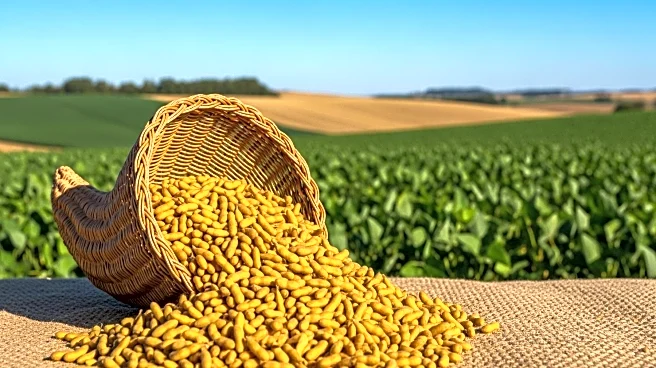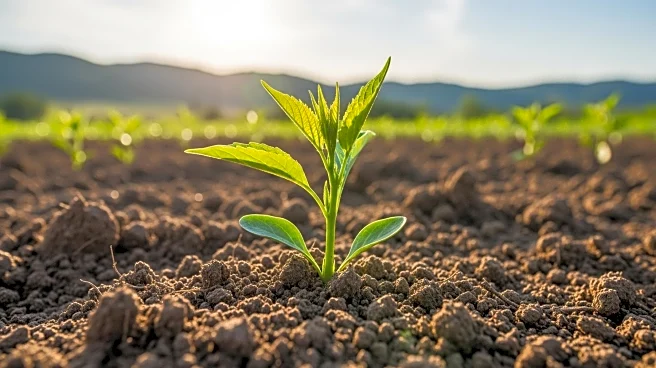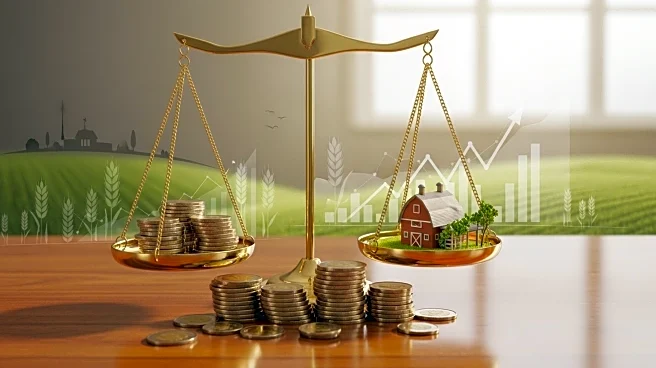What's Happening?
At the Ag Outlook Forum in Kansas City, Seth Meyer, chief economist of the USDA, discussed the economic challenges facing the U.S. agricultural sector. He noted a decline in crop cash receipts, marking the lowest since 2007, due to falling crop prices and high input costs. The lack of Chinese purchases of U.S. agricultural commodities, particularly soybeans, has also contributed to the downturn. Industry experts echoed these concerns, highlighting the broader challenges across the farm economy, including the largest three-year decline in crop cash receipts in history.
Why It's Important?
The current economic challenges in the agricultural sector could have significant implications for U.S. farmers and the broader economy. Declining crop prices and high input costs may lead to reduced profitability for farmers, potentially resulting in financial strain and increased debt levels. The situation could also impact rural economies that depend heavily on agriculture. Additionally, the reduced demand from China, a major export market, underscores the need for U.S. farmers to diversify their markets and adapt to changing global trade dynamics.
What's Next?
The agricultural sector may need to explore new markets and strategies to mitigate the impact of reduced Chinese demand. This could involve increasing domestic demand through biofuels and other outlets. Policymakers might also consider providing additional support to farmers through subsidies or financial aid to help them weather the current economic challenges. The USDA and industry experts remain optimistic about the sector's resilience, with expectations of eventual recovery as trade deals materialize and regulatory rollbacks benefit farmers.
Beyond the Headlines
The challenges facing the agricultural sector highlight the importance of sustainable farming practices and the need for innovation to enhance productivity and resilience. The situation also raises questions about the long-term sustainability of current agricultural policies and the need for a strategic approach to ensure food security and economic stability.










